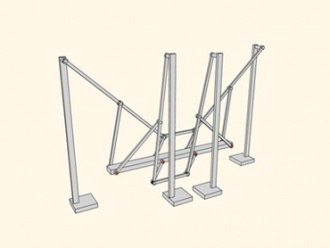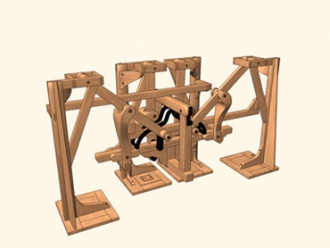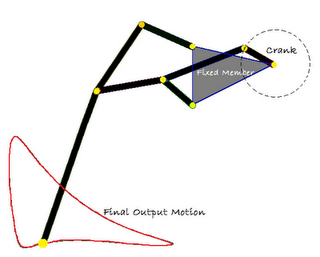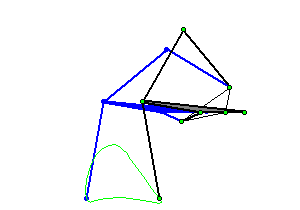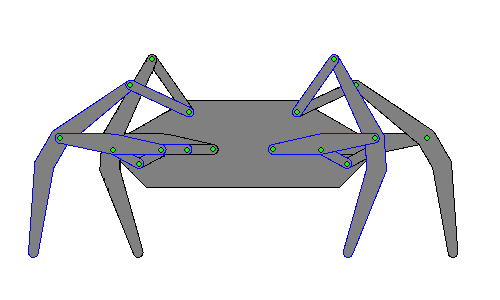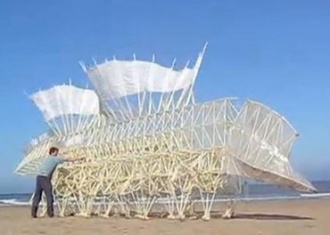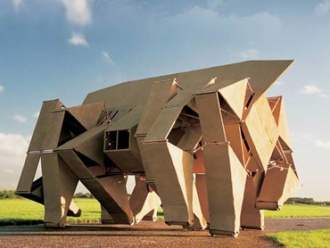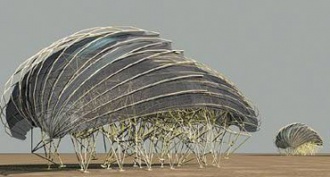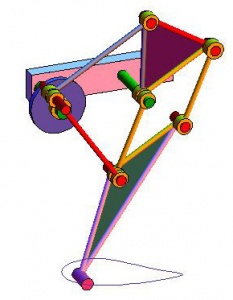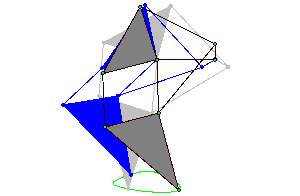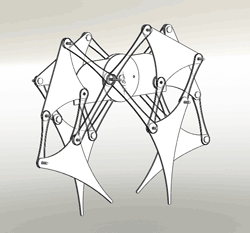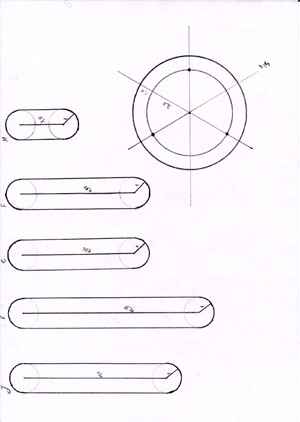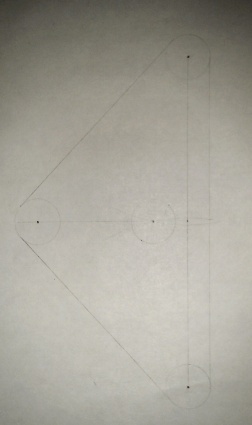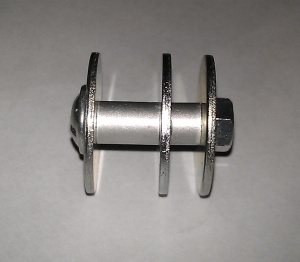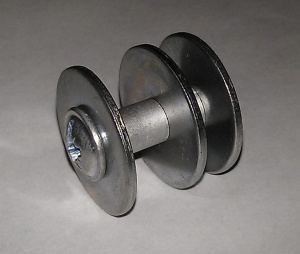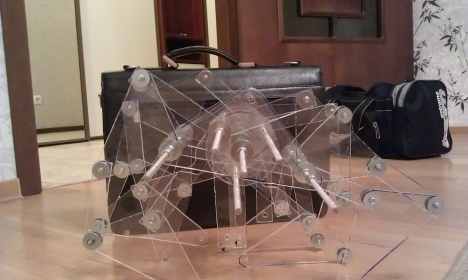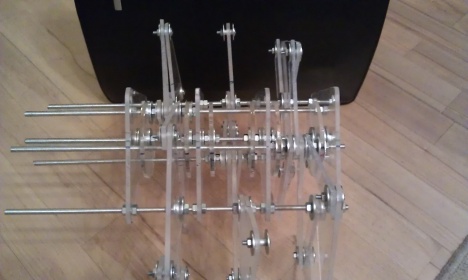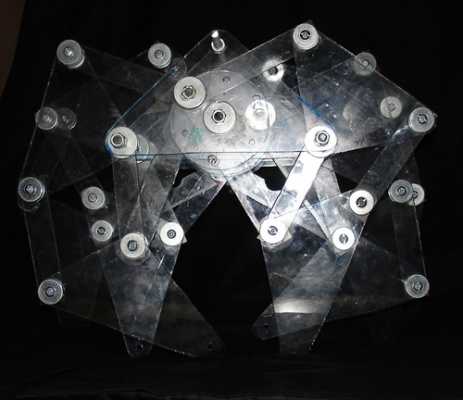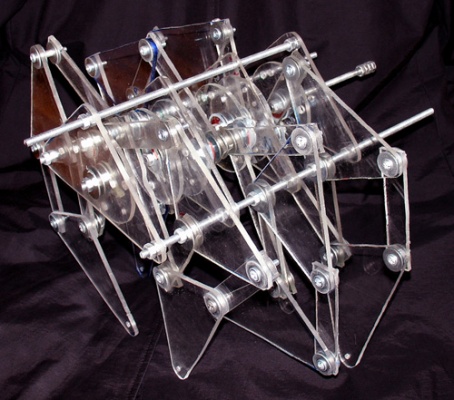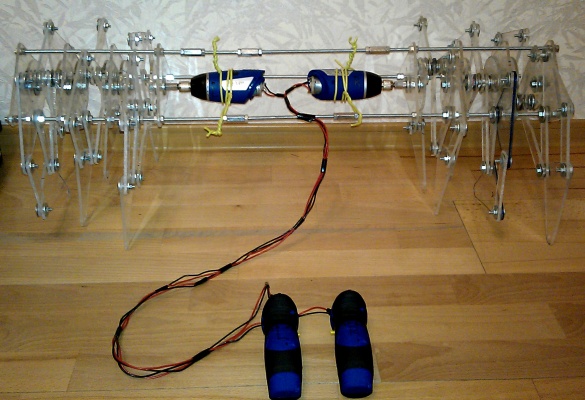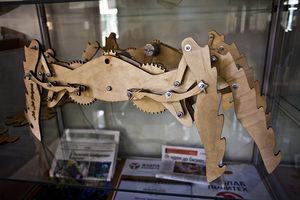Difference between revisions of "Dzenushko Dainis: Walking mechanisms survey"
m (Reverted edits by 188.143.234.155 (talk) to last revision by Михаил Бабенков) |
|||
| (13 intermediate revisions by 2 users not shown) | |||
| Line 1: | Line 1: | ||
| − | There are several basic types of "walking" | + | There are several basic types of "walking" mechanisms based on conversion of the rotational motion into the translational motion. |
| − | mechanisms based on conversion of the | ||
| − | rotational motion into the translational motion. | ||
---- | ---- | ||
| − | ==Chebyshev Walking Mechanism== | + | ==The Chebyshev Walking Mechanism== |
<gallery widths=330px heights=300px perrow = 3> | <gallery widths=330px heights=300px perrow = 3> | ||
File:stopohodjashaja_mashina_1.jpg | File:stopohodjashaja_mashina_1.jpg | ||
| Line 14: | Line 12: | ||
---- | ---- | ||
| − | ==Klann Mechanism== | + | ==The Klann Mechanism== |
[[File:Klann_1.png]] | [[File:Klann_1.png]] | ||
| Line 20: | Line 18: | ||
[[File:Klann_3.gif]] | [[File:Klann_3.gif]] | ||
| − | *The Klann linkage provides many of the benefits of more advanced walking vehicles without some of their limitations. It can step over curbs, climb stairs, or travel into areas that are currently not accessible with wheels but does not require microprocessor control or multitudes of | + | *The Klann linkage provides many of the benefits of more advanced walking vehicles without some of their limitations. It can step over curbs, climb stairs, or travel into areas that are currently not accessible with wheels, but does not require microprocessor control or multitudes of actuators. It lays between these walking devices and axle-driven wheels. |
---- | ---- | ||
| − | == | + | ==The Theo Jansen Mechanism== |
<gallery widths=330px heights=300px perrow = 3> | <gallery widths=330px heights=300px perrow = 3> | ||
File:Jansen 1.JPG | File:Jansen 1.JPG | ||
| Line 31: | Line 29: | ||
</gallery> | </gallery> | ||
| − | *Theo Jansen (born 1948) is a Dutch artist. In 1990, he began what he is known for today: building large mechanisms out of PVC that are able to move on their own, known only as Strandbeest. Jansen has been creating Strandbeest (Dutch: strand=beach; beest=beast), wind-walking examples of artificial life, since 1990. What was at first a rudimentary breed has slowly evolved into a generation of machines that are able to react to their environment: "over time, these skeletons have become increasingly better at surviving the elements such as storms and water, and eventually I want to put these animals out in herds on the beaches, so they will live their own lives." | + | *'''Theo Jansen''' (born 1948) is a Dutch artist. In 1990, he began what he is known for today: building large mechanisms out of PVC that are able to move on their own, known only as Strandbeest. Jansen has been creating Strandbeest (Dutch: strand=beach; beest=beast), wind-walking examples of artificial life, since 1990. What was at first a rudimentary breed has slowly evolved into a generation of machines that are able to react to their environment: "over time, these skeletons have become increasingly better at surviving the elements such as storms and water, and eventually I want to put these animals out in herds on the beaches, so they will live their own lives." |
http://www.strandbeest.com/ | http://www.strandbeest.com/ | ||
| Line 40: | Line 38: | ||
</gallery> | </gallery> | ||
| − | ==Creating a self-propelled platform based on the | + | ==Creating a self-propelled platform based on the mechanisms of Theo Jansen== |
| − | |||
| − | |||
| − | |||
| − | |||
| − | |||
| − | |||
| − | |||
| − | |||
| − | |||
| − | |||
| + | Watching the Theo Jansen mechanisms causes the desire to be able to ride on them (or to "walk"). So, I decided to create such a vehicle, which could move me (in a reduced scale, for the beginning). But if we want to ride it, first it should be able to turn left or right. | ||
| + | *How to achieve it? | ||
| + | It is possible to make two independent parts with two independent motors, and by controlling their speed and direction separately turn as any crawler does. | ||
| + | *Why this one is better than a wheeled vehicle? | ||
| + | If you're driving on sand or any loose terrain, the wheels may start to slip. But the walking mechanisms do not have this problem. | ||
*What has been done? | *What has been done? | ||
Currently, the manufacturing process has been developed and debugged. | Currently, the manufacturing process has been developed and debugged. | ||
| + | *How is it done? | ||
| + | This platform is created from acrylic, aluminum tubes, screws and nuts. In general, they are common materials. The materials chosen basing on the cheapness, the ease of use and aesthetic considerations. But it all started with a sketch of the parts in 1:1 scale. The sketches are presented below: | ||
| − | |||
| − | |||
<gallery widths=300px heights=425px perrow = 3> | <gallery widths=300px heights=425px perrow = 3> | ||
| Line 64: | Line 57: | ||
</gallery> | </gallery> | ||
| − | Then I had to deal with the first problem of this project | + | Then I had to deal with the first problem of this project, the friction. To decrease it, the simple slide bearings were made from aluminum tubes: |
<gallery widths=300px heights=300px perrow = 2> | <gallery widths=300px heights=300px perrow = 2> | ||
File:Roller_1.jpg | File:Roller_1.jpg | ||
| Line 70: | Line 63: | ||
</gallery> | </gallery> | ||
| − | + | Here's how the first module looks like: | |
<gallery widths=500px heights=280px perrow = 2> | <gallery widths=500px heights=280px perrow = 2> | ||
File:Build2_1.jpg | File:Build2_1.jpg | ||
| Line 85: | Line 78: | ||
==What is planned next?== | ==What is planned next?== | ||
| − | 1) | + | |
| + | 1) manufacture the second module (DONE) | ||
2) combine them (DONE) | 2) combine them (DONE) | ||
| − | 3) mount | + | 3) mount motors(DONE) |
| − | |||
| − | |||
| − | + | 4) develop a control system (DONE) | |
| + | 5) develop and install a remote control | ||
| − | 06.10.11 at 23:58 the first successful launch of the combined mechanism | + | 06.10.11 at 23:58 the first successful launch of the combined mechanism had been performed |
| + | Now the wired control system is set up. So that's what we have: | ||
| − | |||
| − | |||
<gallery widths=900px heights=400px perrow = 1> | <gallery widths=900px heights=400px perrow = 1> | ||
File:IMAG0758.jpg | File:IMAG0758.jpg | ||
| Line 106: | Line 98: | ||
==Walking mechanism 1.2== | ==Walking mechanism 1.2== | ||
[[File:intensiv.jpg |300px|right]] | [[File:intensiv.jpg |300px|right]] | ||
| − | |||
| − | The next walking mechanism, now based on the Arduino platform, was assembled during the [http://fablab.spbstu.ru/2013/06/post750/ Summer Crash Course] for pupils in | + | The next walking mechanism, now based on the Arduino platform, was assembled during the [http://fablab.spbstu.ru/2013/06/post750/ Summer Crash Course] for pupils in FabLab Polytech held at the end of June 2013 under the supervision of [[:ru:Andrey_Murachev|Andrey Murachev]] and [[:ru:Dzenushko_Dainis|Dainis Dzenushko]]. The Arduino board control was performed from a computer using the Processing development tool. The program code for Arduino and Processing can be downloaded [[:ru:Файл:Proc_and_ardu.zip | here]]. |
== See also == | == See also == | ||
Latest revision as of 12:43, 7 August 2016
There are several basic types of "walking" mechanisms based on conversion of the rotational motion into the translational motion.
Contents
The Chebyshev Walking Mechanism[edit]
- Pafnuty Lvovich Chebyshev, the professor of St. Petersburg University invented and built the world's first walking mechanism and named it "The Plantigrade Machine". This mechanism, invented by Russian mathematician, has received the general approval at the World Exhibition in Paris, 1878.
The Klann Mechanism[edit]
- The Klann linkage provides many of the benefits of more advanced walking vehicles without some of their limitations. It can step over curbs, climb stairs, or travel into areas that are currently not accessible with wheels, but does not require microprocessor control or multitudes of actuators. It lays between these walking devices and axle-driven wheels.
The Theo Jansen Mechanism[edit]
- Theo Jansen (born 1948) is a Dutch artist. In 1990, he began what he is known for today: building large mechanisms out of PVC that are able to move on their own, known only as Strandbeest. Jansen has been creating Strandbeest (Dutch: strand=beach; beest=beast), wind-walking examples of artificial life, since 1990. What was at first a rudimentary breed has slowly evolved into a generation of machines that are able to react to their environment: "over time, these skeletons have become increasingly better at surviving the elements such as storms and water, and eventually I want to put these animals out in herds on the beaches, so they will live their own lives."
Creating a self-propelled platform based on the mechanisms of Theo Jansen[edit]
Watching the Theo Jansen mechanisms causes the desire to be able to ride on them (or to "walk"). So, I decided to create such a vehicle, which could move me (in a reduced scale, for the beginning). But if we want to ride it, first it should be able to turn left or right.
- How to achieve it?
It is possible to make two independent parts with two independent motors, and by controlling their speed and direction separately turn as any crawler does.
- Why this one is better than a wheeled vehicle?
If you're driving on sand or any loose terrain, the wheels may start to slip. But the walking mechanisms do not have this problem.
- What has been done?
Currently, the manufacturing process has been developed and debugged.
- How is it done?
This platform is created from acrylic, aluminum tubes, screws and nuts. In general, they are common materials. The materials chosen basing on the cheapness, the ease of use and aesthetic considerations. But it all started with a sketch of the parts in 1:1 scale. The sketches are presented below:
Then I had to deal with the first problem of this project, the friction. To decrease it, the simple slide bearings were made from aluminum tubes:
Here's how the first module looks like:
Here's how the first part looks like:
What is planned next?[edit]
1) manufacture the second module (DONE)
2) combine them (DONE)
3) mount motors(DONE)
4) develop a control system (DONE)
5) develop and install a remote control
06.10.11 at 23:58 the first successful launch of the combined mechanism had been performed Now the wired control system is set up. So that's what we have:
Walking mechanism 1.2[edit]
The next walking mechanism, now based on the Arduino platform, was assembled during the Summer Crash Course for pupils in FabLab Polytech held at the end of June 2013 under the supervision of Andrey Murachev and Dainis Dzenushko. The Arduino board control was performed from a computer using the Processing development tool. The program code for Arduino and Processing can be downloaded here.

